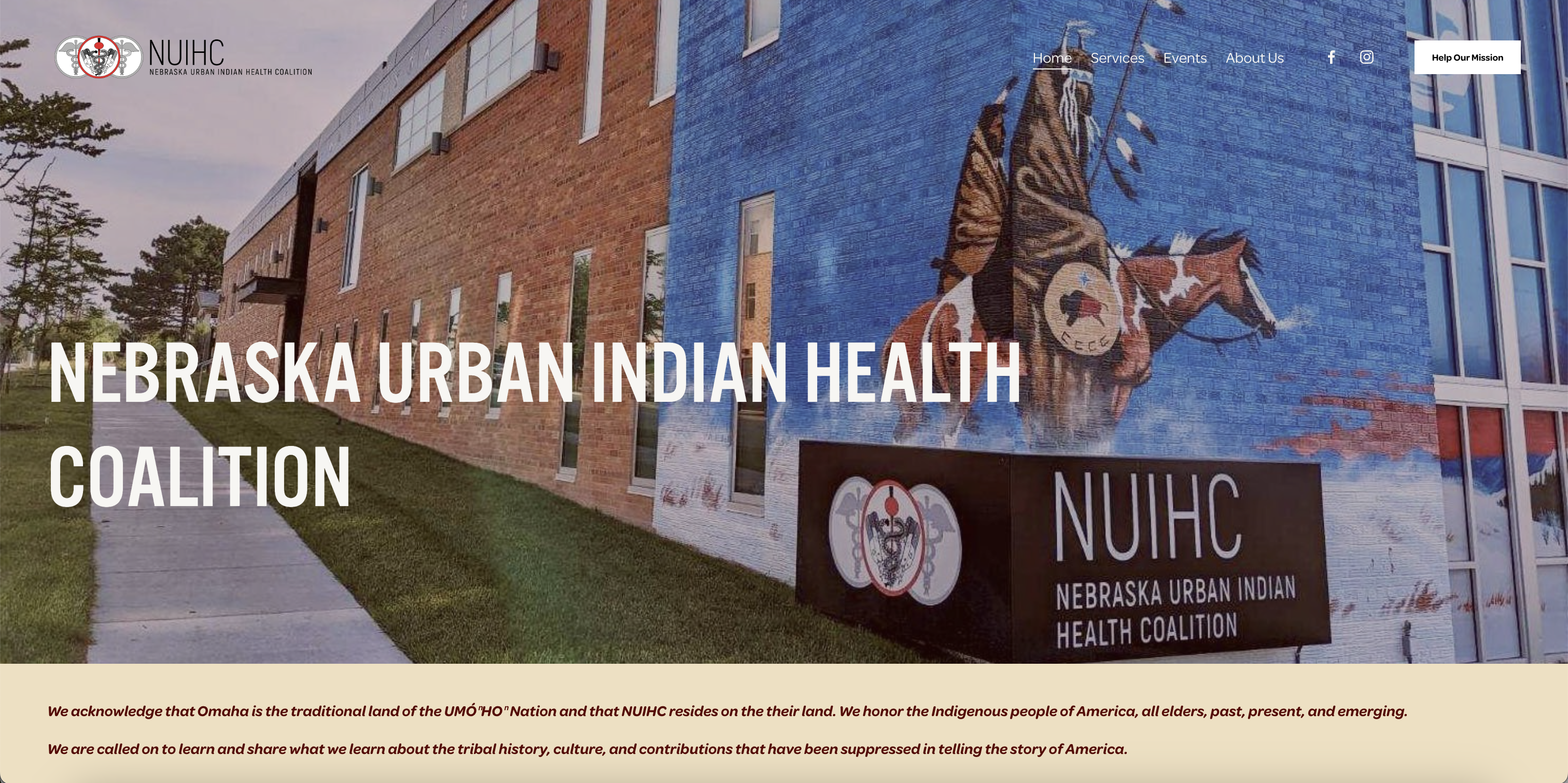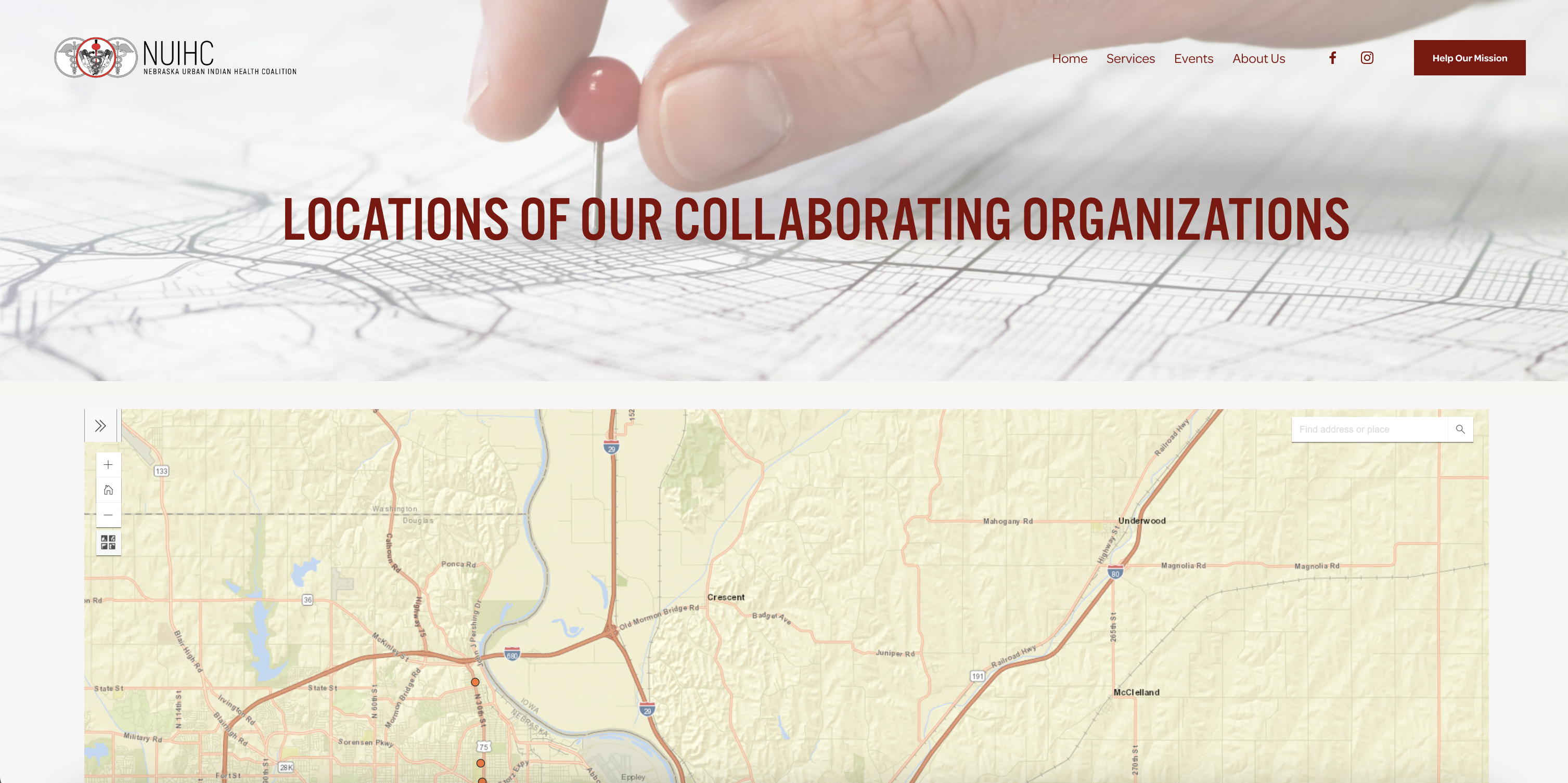Strengths-Based Mapping of Service Access & Utilization for Indigenous People with Substance Use Problems
Earlier this year, we invited fifteen fellows to develop their own web mapping applications, centered on equity and designed with communities in mind, using the SDOH & Place Toolkit. From July to September, we'll feature final fellow applications each week.
App Motivations
Sarah and her team created this strengths-based map in response to a need expressed by the Nebraska Urban Indian Health Coalition (NUIHC), a community partner of UNO. The NUIHC wanted to develop a resource showing the locations of their collaborating partners, and services where they refer their clients to, in order to better serve clients looking for substance use and mental health support.

This application is a web-based asset map containing the location, address, phone number, opening hours, and appointment modalities of services to which NUIHC sends their clients for further support.

The target audience for this asset mep are Indigenous people in eastern Nebraska and western Iowa looking for help with substance use or mental health problems.
Features
The data application is intentionally simple in design. Services are color-coded by category (for example, red diamonds to indicate medical services; blue circles to indicate transportation services).

In addition, we included the location and contact information of the major Indigenous tribes served by the NUIHC so that Indigenous clients can also reach out to the tribes for support.
If you would like to check out Sarah's work you can access the application here.
About the Author
Sarah Nelson is an Assistant Professor in health geography at the University of Nebraska at Omaha, with expertise in aging, health care services, and the social determinants of health. She works most often with Indigenous communities and populations that have experienced being underserved in health care and policy, emphasizing community engagement and collaboration in research and teaching, and community- and participant-led research priorities in choosing and designing research projects.
Previously, she has also worked with Indigenous-led health organizations to understand links between mental health and colonialism, as well as barriers that Indigenous clients of health care organizations experience in an urban setting, and the roles of these organizations in opening health care spaces to Indigenous community members in the city.












